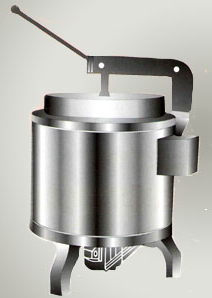An annealing furnace is a piece of equipment used to heat a material  at very high temperatures, to change its hardness and strength properties. Annealing is commonly associated with the manufacture of steel, to relieve internal stresses that may lead to failure in service and to produce a more uniform, or homogeneous, internal structure. This process is also commonly used with various metals, glass, and other materials to make them less brittle and more workable.
at very high temperatures, to change its hardness and strength properties. Annealing is commonly associated with the manufacture of steel, to relieve internal stresses that may lead to failure in service and to produce a more uniform, or homogeneous, internal structure. This process is also commonly used with various metals, glass, and other materials to make them less brittle and more workable.
For metals, an annealing furnace must be capable of heating the material to a specific temperature, known as the re-crystallization temperature. This produces changes in the atomic structure and causes the metal to soften. While annealing temperatures vary depending on the material and application, a typical temperature for annealing steel is around 1,292°F (700°C). An annealing furnace is designed for very uniform heating, followed by a gradual cooling process. To prevent oxidation of the material, the heating chamber is airtight, with a slightly positive pressure. The atmosphere within the chamber typically consists of a combination of nitrogen and hydrogen.
The two primary types of annealing furnace are:
- Batch
- Continuous.
Batch Furnace:
In a batch furnace, single or multiple stacks of coils are usually placed on a fixed base inside the heating chamber.Continuous Annealing Furnace:
A continuous annealing furnace will heat a material as it moves along a conveyor, or on a rotating hearth. A coil of material is unwound, treated as it moves through the furnace, and then rewound.The annealing process can take 15 minutes to several hours, depending on the type of material, treatment application, and size of the coils.
Natural gas is commonly used as heating fuel in an annealing furnace. A series of burners are located around the inside surface of the heating chamber. A fan is often used to circulate and convey the heat around the material being annealed. Most modern annealing furnaces use a computer system to control the natural gas supply, to monitor and analyze conditions inside the heating chamber, and to drive motors and other mechanical equipment used to convey the annealing material. The heating chamber is designed to maintain a high degree of temperature accuracy and uniformity as the material is heated.
An annealing furnace can be purchased in a wide variety of sizes, and with a range of capabilities. Units are manufactured for laboratory and small-scale applications, to very large furnaces like those typically used in steel foundries. Annealing furnaces have become more efficient in recent years due to innovations, such as improved chamber designs and seals to reduce escaping heat and emissions; better control of temperature and treatment uniformity; combined natural gas and electric heating for higher efficiency; and improved process controland monitoring capabilities.
